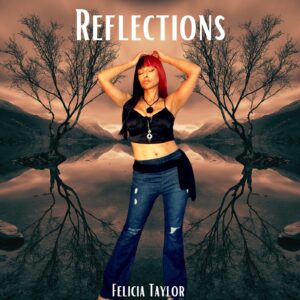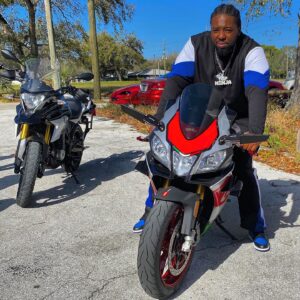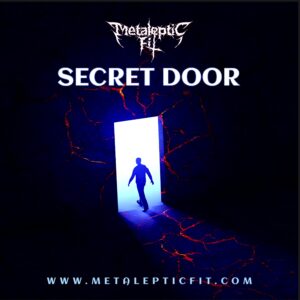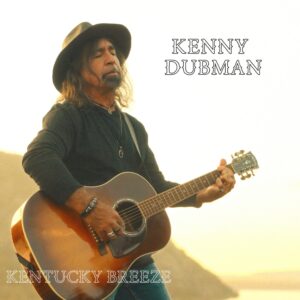
Eímear Noone got into composing and conducting video game music by accident. One day, while studying music at Trinity College Dublin, a fourth-year student came to the bar she was drinking in with members of the college chapel choir and offered them a few quid to help with the orchestration on a project of his.
“I have a vivid memory of sitting on a studio floor somewhere in Dublin writing choral parts with my pals and then singing them,” she says. “Six months later my brother calls me in a complete tizzy and says, ‘Did you work on Metal Gear Solid?’ I was like, ‘No!’ He says, ‘Well, I’m looking at your name on the screen credits right now.’ And sure enough, the session she had contributed to for beer money was the soundtrack to Hideo Kojima’s blockbusting adventure game. “Years later I was at the Bird’s Nest in Beijing at the Olympic Stadium conducting this very piece of music,” she says. “It’s just a bizarre life.”
Noone is now a hugely successful film and video game composer, having contributed scores for directors such as Gus Van Sant and Joe Dante, and for games, World of Warcraft, Diablo III and Hearthstone. In November, she’s presenting her second series of High Score, Classic FM’s agenda-setting programme dedicated to game music. Underappreciated outside of game fandom for years, the genre is now huge business with dedicated orchestras playing sold-out global concert tours. And Noone is a passionate advocate – very keen to explore and explain the unique elements of the art form.
Eímear Noone presents High Score, Classic FM’s programme dedicated to game music. Photograph: Classic FM
There is, of course, a foundational similarity between game and film scores – they are both composed to accompany and accentuate screened action. But while a film score needs to accompany a two-hour linear experience with specific cues and events, video game music must be there for many hours of play. Most open-word action adventures, the likes of Assassin’s Creed Origins, Witcher 3 and Final Fantasy XV, offer over 100 hours of narrative, but many players will spend much longer exploring.
Music scores also have two different roles in games: they accompany the non-interactive cinematic sequences that set up the story and occur throughout a game – sort of like short animated movie sequences; and they provide background music while you play. “Cinematic are scored very similarly to a movie or an animated film. The composer will be given an animatic, which could be anything from a fully rendered sequence to just stick figures on screen. But the edit is pretty close to what it’ll be in the end.
“But when music needs to respond to changes the player makes in the world, we employ a kind of loop system. For this, we use a recording method known as striping – we might record the strings separately, for example, but we’ll compose in a way that the strings on their own provide a functioning piece of music. Then, if our character triggers something in the world, perhaps a battle for example, we can land the wood winds or brass on top of that to increase the intensity. Each part must be self-contained yet able to work together with others – you need to be able to kick in the brass, kick in the percussion, whenever its triggered by gameplay. It’s like a Rubik’s cube puzzle! I think this is the kind of thing that Mozart would have enjoyed – he loved puzzles. Mozart would have loved making game music.”
Noone also points out that video game scores help establish the “reality” of the world the player is about to explore: the instruments used, the style of music, the pace and tempo all work with the art and design to give the players clues about how the universe functions. “The composer has to put you in the headspace of the world, emotionally and intellectually,” she says. “Often these are fantasy worlds, but to ensure they make sense they must have their own rules – and the composer must abide by them. I had a fan contact me once who said ‘I was just listening to the score of World of Warcraft and there are electric guitars! There are no electric guitars in Azeroth!’ But these rules are important – they help make an authentic fantasy world.”
For Noone, the most satisfying part is composing the themes that accompany the player throughout the interactive experience. “In-game music is where the composer gets the most freedom – it’s where we creates the big themes,” she says. “This is where a lot of the music we perform live with orchestras comes from; it’s the big identifiable themes that players associated with the game and with the characters.
“Take the music of Koji Kondo – as soon as you hear the theme from Legend of Zelda, you’re right back in the game, you’re back in the time period in your life that you played it and you’re back with the people you played it with. It’s like hearing a great pop song playing over and over again on the radio – it encapsulates that time for you, it’s in bars, it’s in shops … and with video game music, you live with that soundtrack for the entire time you’re playing the game, it’s around you, it’s part of your life – and it’s not two hours, it’s however long you spend in that game, which can be years.
“Game soundtracks become the soundtracks to people’s childhoods, the soundtracks to their second childhoods and their children’s childhoods! More people are listening to orchestral music through video games than ever before in the entire history of recorded music.”
Noone moves on to another difference between film and video game music: they follow different trends. “In film, there’s a stylistic trend at the moment away from the big theme,” she says. “Directors talk a lot about texture. But it seems that video game directors still embrace the big theme, and that’s good for composers because we want to write something more involving.”
She is passionate and defensive about game music and its merits. I ask her if the medium, with its lush symphonic orchestration, is kind of old-fashioned – if you compare it to where modern instrumental music is going? I bring up Elgar and his use of big sweeping themes as an example of where game music seems to be and she smiles broadly. “Actually, this is a really good example because when Elgar was writing that music it would have been really uncool – it’s very emotional, it’s visual but at the time there was a lot of atonal music, things were changing, going into serialism even – and Elgar was writing these big lush emotional tunes – how dare he?!”
So it’s actually quite radical for video game music to be overtly lush and emotional? “This is the music of the 21st century,” she says. “And look, we do have atonal music in video games – listen to Garry Schyman’s BioShock score, for instance. I just sat on a panel with Krzysztof Penderecki and his influence is all over horror games. It’s all about the context. There’s a gorgeous mobile game Contre Jour – it’s very visually different, and the piano score is very reminiscent of the score to Amélie. I hear the influence of Glass or Reich in lots of what you might consider more traditional classically influenced scores – especially Steve Reich’s Proverb, the vocals on that. Ethereal vocals are definitely part of the video game music style.”

Music from the video game Zelda is performed during Video Games Live by the English National Ballet Orchestra and the Apollo Voice Choir at the Hammersmith Apollo. Photograph: Gareth Cattermole/Getty Images
For the next season of High Score, Noone has lined up some themed features dealing with specific elements of game music. One show is all about Japanese soundtracks, from the seminal work of Nobuo Uematsu, who operates in the western orchestral tradition, to J-pop-inspired Masato Nakamura, composer for Sonic the Hedgehog, who is part of the band, Dreams Come True. She also has a programme dedicated to nostalgia, looking back at the earliest works of composers such as Nintendo’s Koji Kondo, who started out on arcade games in the mid-1980s. Before the arrival of CD-Rom technology in the early 1990s, game soundtracks had to be programmed directly to sound chips, with only a very limited amount of memory available. But Noone thinks this process was vital in forming the unique sound of game scores.
“The reason some of these themes endure, especially Koji Kondo’s, is he had to sit down and painstakingly programme the themes in note by note – so every note mattered – he had to really seriously plan it. If you look at Beethoven’s manuscripts you’ll see him start with a complex theme and then cut that back and he ends up with the opening of the fifth symphony. Similarly, Koji had to refine and chisel down – and that’s why the themes from Mario and Zelda endure: they had to be simple but effective and meaningful.”
Noone’s programmes then are going to be an interesting listen for game and music fans who want to understand why scores sound the way they do – and she can be amusingly honest about how game scores (just like film scores) have tropes and techniques that composers will rely on again and again. “If I’m going to be really simplistic, we all know instantly that when the chord of C major goes to F sharp major then back to C major, there’s a spaceship about to fly over head,” she laughs.
“Flat five one or sharp four one is a spaceship flying over. That’s it. Every time.”
• Eímear Noone presents the new series of High Score from Saturday 9 November, 9-10pm on Classic FM






